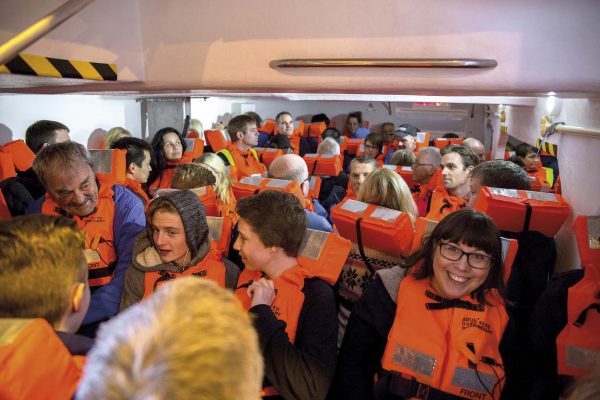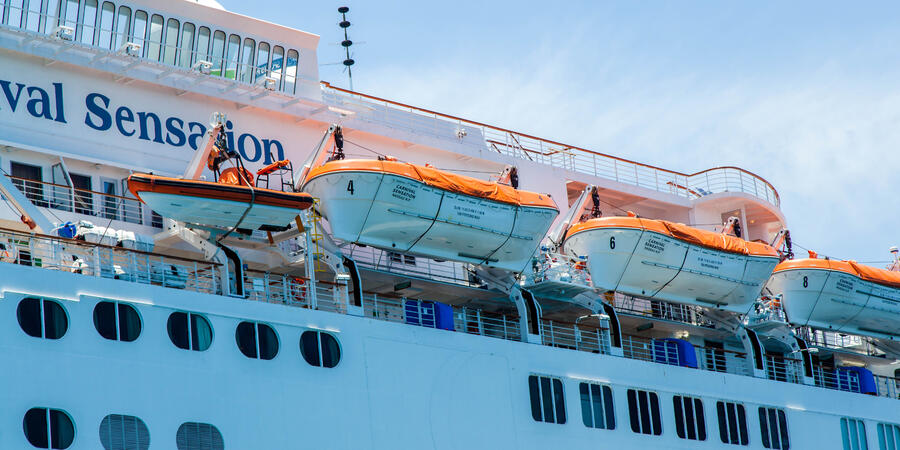Table Of Content
- The capacity of each lifeboat
- Introduction of SOLAS (Safety Of Life At Sea)
- 'Access to hidden-gem ports': Why this luxury yacht is the best option for beach lovers
- Are There Enough Lifeboats On Cruise Ships To Save Every Last Passenger?
- How Many Lifeboats Are There On A Cruise Ship?
- Lifeboat Drills and Training: Preparing for the Unexpected

If you are anywhere concerned, you can take comfort from the fact that of the hundred cruise ships sailing oceans and rivers every day, lifeboats are very rarely required. You might even have seen the Titanic when many people died because there weren’t enough lifeboats and wondered if things have changed for the much bigger cruise ships of today. “Sakara” is a Sanskrit word meaning “thoughts become things” – a fitting name, given the thought that went into the ship’s chic design. And our itinerary for the week couldn’t be more yacht-like – an island-hopping experience in the West Indies, stopping in out-of-the-way ports that larger cruise ships can’t manage.
The capacity of each lifeboat
When the Titanic’s lifeboats reached the water, the slack in the line allowed a person to release the hook attaching the rope to the lifeboat. Enclosed lifeboats typically have built-in diesel engines, allowing them to move independently from the ship in an emergency. Remember, a properly maintained lifeboat could be the difference between life and death for passengers and crew members alike. As part of the maintenance process, it’s important to engage qualified engineers who are experienced with lifeboat systems. Companies like Survitec are gaining ground in lifeboat maintenance services, deploying highly skilled technicians across continents to provide annual and five-yearly inspection and maintenance services. With safety as the top priority, you must ensure that lifeboats are frequently checked and maintained by qualified professionals.
Introduction of SOLAS (Safety Of Life At Sea)
They not only adhere to safety regulations but also equip passengers with the knowledge and confidence that, should an emergency arise, they’ll know what to do. Cruise ships do conduct lifeboat drills, and they are an essential aspect of the cruising experience. These drills are not just a nod to safety standards, but a foundational practice to ensure the wellbeing of every passenger and crew member on board. Older lifeboats can hold 150 individuals, whereas modern lifeboats are significantly larger. However, they must meet the same standards in terms of safety as lifeboats that are limited to only 150 guests.
'Access to hidden-gem ports': Why this luxury yacht is the best option for beach lovers
One of the key regulatory bodies is the International Maritime Organization (IMO), which has set out a range of safety standards under the International Convention for the Safety of Life at Sea (SOLAS). Lifeboats play a pivotal role in ensuring the safety of passengers and crew aboard cruise ships. These specialized vessels are designed to provide a haven in a maritime emergency, such as ship failure, fire, or even a distressing event like a ship sinking. In conclusion, lifeboat requirements on cruise ships are a critical aspect of emergency preparedness and passenger safety.
Are There Enough Lifeboats On Cruise Ships To Save Every Last Passenger?
The cruise line provides clear instructions on the importance of attending these drills and actively participating, as it ensures that everyone on board is aware of the necessary safety protocols. Carnival Cruise Line conducts regular lifeboat drills, which are mandatory for all crew members. These drills are scheduled at specific intervals throughout each cruise and are a fundamental part of the crew’s training program. The purpose of these drills is to simulate emergency situations and test the crew’s responses, ensuring that they are well-prepared and capable of responding swiftly and efficiently. The distribution of lifeboats throughout the ship is a crucial aspect of emergency preparedness. While lifeboat drills are mandatory, they play a crucial role in preparing passengers and crew members for emergencies at sea.
How Many Lifeboats Are There On A Cruise Ship?
Now that we understand the importance of lifeboats on a cruise ship, let’s delve into the regulations and requirements that govern their presence and operation. Many Cruise Ships like the Royal Caribbean Oasis of the Seas carry more boat capacity than is required. But it is still not enough, so Liferafts are added in, to accommodate all total capacity even if a significant number of lifeboats have some difficulty in the event of an emergency.
Lifeboat Drills and Training: Preparing for the Unexpected

Lifeboats are located outside on both sides of the cruise ship, typically stored on or just above one of the middle decks with an outdoor promenade so passengers can easily board them. This spot is ideal because it's a central location for both the upper- and lower-deck cabins, as well as many public indoor and outdoor venues and amenities. All cruise ship passengers must participate in a lifeboat drill before the cruise sets sail. For every 1000 people on the ship, a cruise ship would need 75% of that number in lifeboat capacity, or 750 people. The International Convention for the Safety of Life at Sea (SOLAS) stipulates that a ship must have enough lifeboats to accommodate 75% of the people on board. Although it’s unlikely a cruise ship sinking or even capsizing, there are rare occasions when lifeboats may be needed.
Cruise ship saves six from life raft, Coast Guard rescues six more - USA TODAY
Cruise ship saves six from life raft, Coast Guard rescues six more.
Posted: Thu, 14 Dec 2023 08:00:00 GMT [source]
What can be found on a lifeboat?
Lifeboats are strategically distributed throughout Carnival Cruise ships, with clear signage and designated lifeboat stations to facilitate an organized evacuation process. The capacity of lifeboats is carefully determined based on the ship’s capacity, ensuring that there are enough spaces available for all individuals on board. Passengers are encouraged to familiarize themselves with the location of their assigned lifeboat station upon embarkation. Passengers are also encouraged to participate in lifeboat drills, as their familiarity with emergency procedures can greatly enhance overall safety.
Survival Equipment: What’s Inside a Lifeboat?
Now that we have covered lifeboat drills and procedures, let’s explore the various emergency situations where lifeboats come into play. Whether you are a seasoned cruiser or planning your first voyage, understanding the significance of lifeboats and their role in ensuring the safety of everyone onboard is vital. So, let’s embark on this journey and discover everything you need to know about the lifeboats that serve as a crucial lifeline in the event of an emergency at sea.

Once the lifeboat approaches the cruise ship, the crew must align it with the davit system carefully. The boat hooks are then reconnected, and the lifeboat is hoisted back to its original storage position. These are areas close to the lifeboats where you’ll receive further instructions from the crew. Make sure to wear your lifejacket and follow the crew’s guidance to board the lifeboat safely and efficiently. As a passenger, you’ll participate in a mandatory lifeboat drill on the first day of your cruise to familiarize yourself with the process and ensure you can act quickly in case of an emergency. These stations are strategically placed, usually near lifeboats, to streamline the evacuation process in case of an actual emergency.
The location of lifeboat stations takes into account factors such as accessibility, proximity to passenger accommodations, and the ship’s layout. They are strategically positioned to ensure that passengers can reach their designated lifeboat station quickly and efficiently during a potential evacuation. These safety regulations also mandate that Carnival Cruise ships are equipped with state-of-the-art navigation systems, communication devices, surveillance systems, and fire prevention equipment. Fire detection and suppression systems are strategically installed throughout the ship to detect and control fires quickly, ensuring the safety of all on board. In fact, we have only really discussed the minimum number of lifeboats for accommodating people in this article. There are additional requirements for spare capacity in liferafts, in addition to the requirements for capacity in lifeboats.
Trained inspectors who are qualified are to report any compliance issues to the International Maritime Organization. The International Maritime Organization contains information on servicing, drilling, and maintaining all lifeboats. Weekly and monthly inspections are expected to be administered by the crew, with yearly or long-term inspections done by a representative of a lifeboat manufacturer. During the manufacturing process, lifeboats are tested using water weights, which can mimic the weight of passengers in various spots around the vessel.
There will be enough lifeboats for 75% of the mega cruise ships’ maximum capacity for crew and passengers. By prioritizing lifeboat training and drills, Carnival Cruise Line demonstrates its commitment to passenger safety and the importance of preparedness for any potential emergency situation. These measures work hand in hand with the presence and distribution of lifeboats to ensure the safety and security of all onboard.
ABB is making strong progress on its new propulsion concept called Dynafin which the company believes will increase a ship’s efficiency and contribute to the efforts to reduce emissions. The A.520 tests followed the December 2021 Heavy Weather Sea Trials, carried out in line with SOLAS requirements for Novel Appliances. Those trials saw Seahaven deployed from EDT Jane, an 80-meter offshore support vessel, with representatives from Class and observers from UK MCA in attendance. This is the only way to ensure the survival of everybody on board should the ship sink or catch fire. When the ship’s weight is transferred to the water, the water pressure moves a hydrostatic piston to the up position, pushing a lever and releasing the hook.
They are also configured for simultaneous boarding across two levels, effectively reducing the loading time by 50% from an equivalent capacity regular lifeboat. Unfortunately, because the ship had listed heavily to starboard, it made it impossible to launch all of the lifeboats. The Cruise Ships of today are governed by International Laws and are enforced by the Coast Guard. The ships have plenty of room for every passenger and crew member on board. The drill must take place within 24 hours of the ship leaving its first port and is also mandatory under CLIA’s policy. All cruise lines have to follow regulations called Safety of Life at Sea (SOLAS), which were instituted following the sinking of the Titanic.

No comments:
Post a Comment